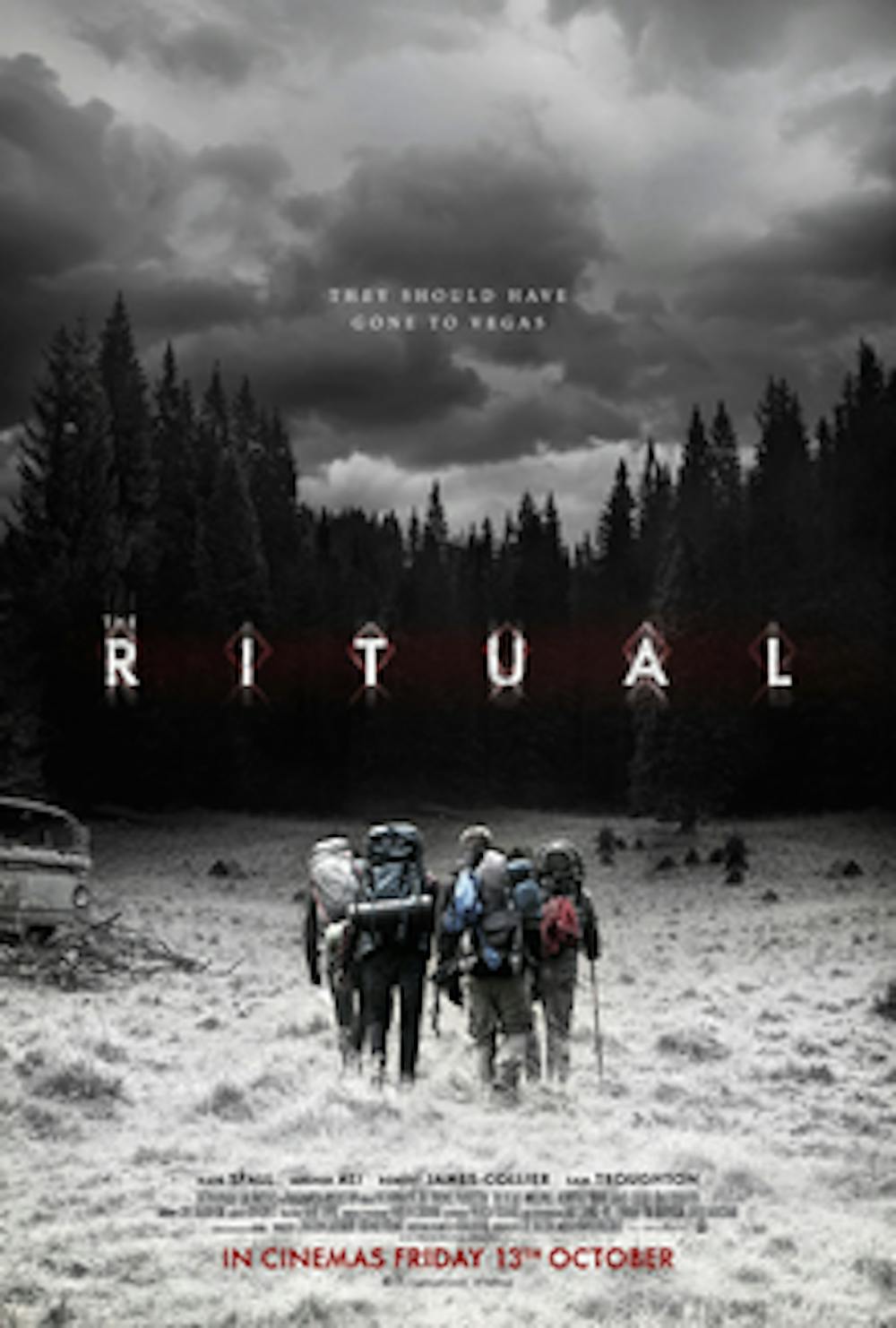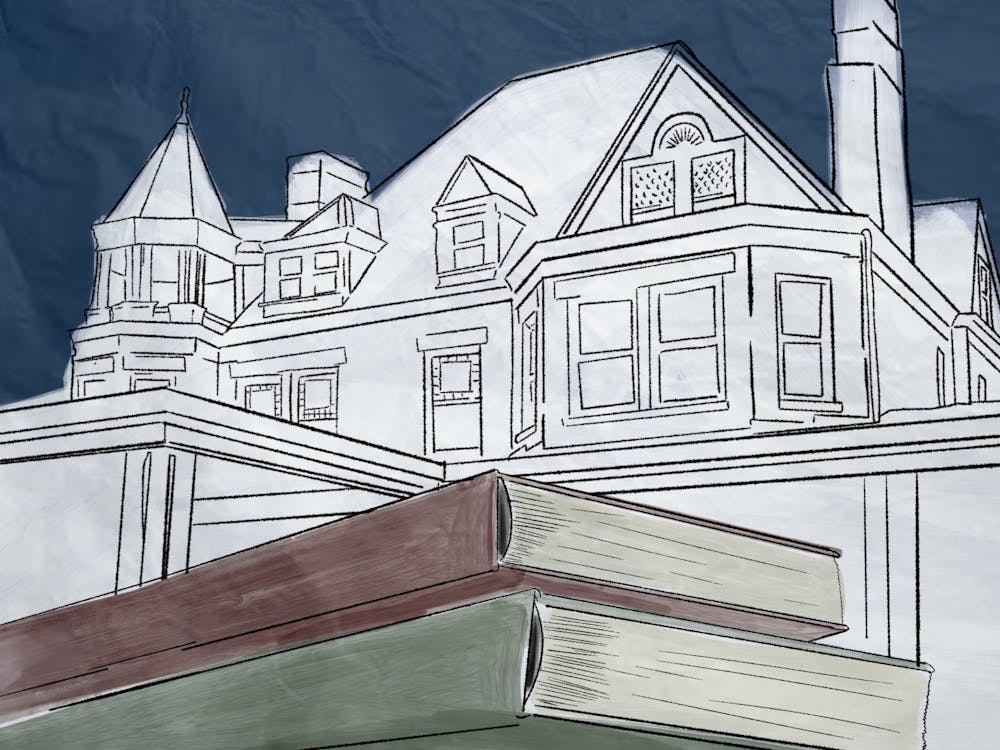For decades, directors have been making horror movies about a group of friends meeting their demise while camping in supernaturally-infested woods. From “Friday the 13th” to “The Cabin in the Woods,” one would think that every inch of the thematic haunted forest has been trampled on. David Bruckner’s new Netflix horror flick proves that wrong.
“The Ritual” is technically an on-screen adaptation of Adam Nevill’s 2011 horror novel of the same name, but Bruckner and screenwriter Joe Barton made significant changes to the plot of the film. In fact, the story is entirely different aside from the fact that four friends go on a camping trip in spooky woods.
While deviations from the original text are usually considered a major “no-no” when making film adaptations, Bruckner and Barton apparently made the right decision. One anonymous viewer reviewed the film on Netflix, calling it an “outstanding adaptation of a horrible book by a terrible writer.”
Despite the questionable quality of Nevill’s novel, the film truly is outstanding on all levels. The film opens in an English pub, where five college friends are trying to decide on their next “lads holiday.” Robert (Paul Reid) makes the suggestion that they go hiking on King’s Trail in the Swedish wilderness. All of the friends are on board with this plan — all but Luke (Rafe Spall), a borderline alcoholic who refuses to let go of the wild party days of his youth. Luke pulls Robert into a liquor store to restock on vodka and try to convince him to give up his hiking plan.
This is the last conversation the men will ever have together. The two unknowingly interrupt a burglary at the liquor store. Luke manages to hide behind a shelf before the thieves could spot him, but Robert isn’t so lucky. After refusing to turn over his wedding ring, he is struck by a machete and killed.
The four remaining friends decide to honor Robert’s memory by hiking the King’s Trail together. Despite the friends’ best efforts, the trip is tense. The men are all grieving, Luke is wrought with survivor’s guilt and one friend in particular — Dom (Sam Troughton) — makes it explicitly clear that he blames Luke for Robert’s death.
Things only get worse when the whiny Dom takes a fall and injures his knee. Not wanting to put up with Dom’s complaining for any longer than they have to, group leader Hutch (Robert James-Collier) and Luke decide to cut through the dense forest that lies in the valley between the mountains, supposedly a shortcut to the lodge they’re aiming to get to.
It goes without saying that this is a big mistake. The four friends are being stalked by some invisible force that carves Blair Witch-esque symbols into tree trunks and turns all their dreams to nightmares. While this is spooky in and of itself, the real suspense in this movie is built through ambiguity. Bruckner expertly disorients his audience alongside his characters, leaving every viewer with that unsettling feeling that someone is watching them.
He plays on the part of human nature that jumps to extreme conclusions. Was that animal carcass hung in the tree sacrificed or left by careless hunters? Was that a hand wrapped that branch or just a leaf? The disconcerting nature of the plot leaves viewers just doubtful enough that the reveal that the woods are indeed inhabited by a Norse god and his cult of followers comes as a complete surprise.
While the performances from the cast are stellar, what truly propels this movie past cliché is its directing. Bruckner expertly twists the psychological and supernatural, making dynamic cinematic choices that simultaneously ground and throw the viewer. The soundtrack of the film is the best example of this. Silence plays a critical role in this film. Long scenes are filmed with hardly any track backing the action at all, making something as mundane as the sound of a zipper pulling into a terrifying jumpscare. Bruckner makes nothing happening seem scary with audiences constantly asking wondering what could be coming next.
Additionally, Bruckner holds a firm grasp on the pacing of the story. He lets the story speed up and slow down as it pleases, never cutting anything off too soon. One of the slowest scenes of the movie is one of the most critically important. Luke is alone on top of a ridge thick with trees, when he sees the bark of one seem to come to life. A skeletal hand detached from any noticeable body unwraps itself from around the trunk and disappears. The scene is long, switching between looking at Luke’s face to zooming in on the tree and back again several times, accompanied by a hauntingly slow crescendo of violins. The effect of this is palpable on audiences, and it is unnerving.
“The Ritual” abandons all preconceptions regarding horror movies that are set in the woods. Relying on in-depth psychology over cheap jumpscares paid off for this flick, and Bruckner has officially revived a done-to-death, decades-long trope.





